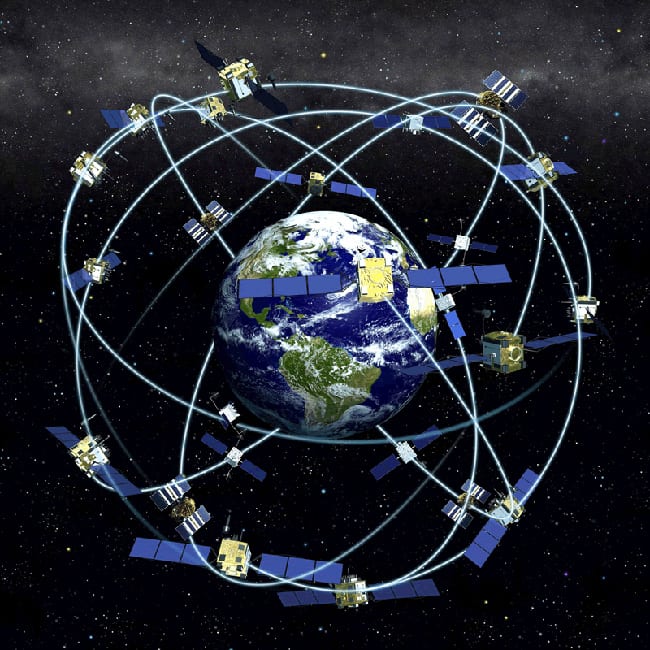ISO New England successfully implements three-year DOE Smart Grid Project
 Numerous advancements gained in monitoring and analyzing power system performance; sets foundation for improved reliability and operational efficiency
Numerous advancements gained in monitoring and analyzing power system performance; sets foundation for improved reliability and operational efficiency
In 2009, ISO New England, in partnership with regional transmission owners (TOs), applied for and received a smart grid investment grant from the U.S. Department of Energy (DOE) to install data collection devices on the region’s high-voltage transmission system. In the summer of 2010, the ISO and TOs kicked off the Synchrophasor Infrastructure and Data Utilization (SIDU) project, and in June 2013, marked the successful, on-schedule, under-budget completion of this high-tech advancement in grid monitoring and evaluation.
 Credit: National Oceanic and Atmospheric AdministrationThe devices installed, called phasor measurement units (referred to as PMUs or synchrophasers), collect data about electricity flow on the grid, including voltage and frequency. The units sample power conditions about 30 times per second (compared to the current one sample every two seconds) and use global positioning system technology to time-stamp the measurements. This allows measurements taken by PMUs in different locations and by different transmission owners to be syncronized. The PMUs communicate to the ISO and local control centers owned by the TOs; the data is collected in phasor data concentrators at the TO’s control centers.
Credit: National Oceanic and Atmospheric AdministrationThe devices installed, called phasor measurement units (referred to as PMUs or synchrophasers), collect data about electricity flow on the grid, including voltage and frequency. The units sample power conditions about 30 times per second (compared to the current one sample every two seconds) and use global positioning system technology to time-stamp the measurements. This allows measurements taken by PMUs in different locations and by different transmission owners to be syncronized. The PMUs communicate to the ISO and local control centers owned by the TOs; the data is collected in phasor data concentrators at the TO’s control centers.
Under the SIDU project, the ISO and TOs installed:
- Nearly 80 PMUs at 40 substations in New England
- Phasor data concentrators (PDCs) at the ISO and seven transmission owners
- Communication infrastructure to support PMU data streaming from substations to the transmission owners and then to the ISO
- Alstom’s PhasorPoint application for enhanced wide-area monitoring and situational awareness
- V&R Energy System Research’s Region of Stability Existence (ROSE) application to compute the real-time operational stability boundary and margin
- Mehta Tech’s master station software to configure and communicate with the Mehta Tech PMU, allowing for displaying, analyzing and reporting disturbance data
- In-house developed Data Quality Management System (DQMS) application to monitor and alert on PMU data quality issues
Results
The SIDU project has already achieved immediate benefits for New England by enabling the monitoring of system dynamics that was previously not possible; fast and accurate post-event analysis, and validating and improving power system models.
Monitoring power system dynamics
Earlier this year, SIDU data recently captured and alerted the ISO of a voltage oscillation that occurred without any system disturbance, lasted for about three minutes, and then disappeared suddenly (voltage stability is essential to maintaining power flow on the grid). The data enabled the ISO to determine the origin and propagation of the oscillation. The ISO is now working with the source to help prevent future occurrences.
Fast and accurate post event analysis
In July 2013, a forest fire in Canada tripped multiple transmission lines, resulting in the loss of about 1,750 MW of imports from Hydro Quebec. ISO operations logs give the approximate time of the line trips. However, by using PMU data, the event sequences were captured at millisecond accuracy across a wide area. This capability enabled engineers to understand what exactly happened to the grid, and how the system behaved before, during, and after the disturbance. The reconstruction of event sequences is particularly important for complex events where many elements can be involved in short time.
Power system dynamic model validation
Last year, a single-phase-to-ground fault occurred at a power plant causing a transmission line to trip. From the PMU data, the ISO could see that the line was transiently blocked during the fault; after the fault was cleared, power flow recovered to the pre-fault level at a certain ramp slope. However, the ISO’s simulation model did not exhibit the same result as the PMU measurement. Having identified the deficiency, the ISO worked with a vendor to improve the model, which has since shown improved consistency with the actual PMU measurements.
Grid planners and operators rely on simulations of the dynamic behavior of the power system to make decisions, and need to have confidence in the models. Inaccurate, over-optimistic models can lead operators to take inappropriate actions that are detrimental to system security, while pessimistic models can lead to conservative grid operation and under-utilization of transmission capacity, thereby inhibiting economic generation dispatch.
Next steps
With this infrastructure in place, New England now has the technology platform on which the next generation of monitoring and analysis tools will be developed. Over the coming years, the ISO will explore advanced applications to determine the potential integration of PMU data in the operation of the power system. Ultimately, the SIDU project is expected to provide the region with improved reliability through enhanced situational awareness, faster response to real-time system events, and new system restoration capabilities.
About the grant
The DOE originally approved a project grant of $18 million. However, the ISO and TOs identified over $3 million in cost savings opportunities as implementation of the project began. Without any significant changes to the original scope of the SIDU, the final total budget amounted to $14.9 million. The DOE contributed $6.4 million, and the ISO and the region’s transmission owners covered the remaining $8.5 million over the project’s three-year implementation period. The DOE had received the funding to facilitate the development and implementation of smart grid technologies through the American Recovery and Reinvestment Act of 2009.
Installing PMUs on the bulk power system was a recommendation made by the DOE after the 2003 blackout that spread from Ohio to the East Coast in a matter of seconds. Many other ISOs also have received grants and are working on similar smart grid initiatives.
- Categories
- Industry News & Developments
- Tags
- smart grid



